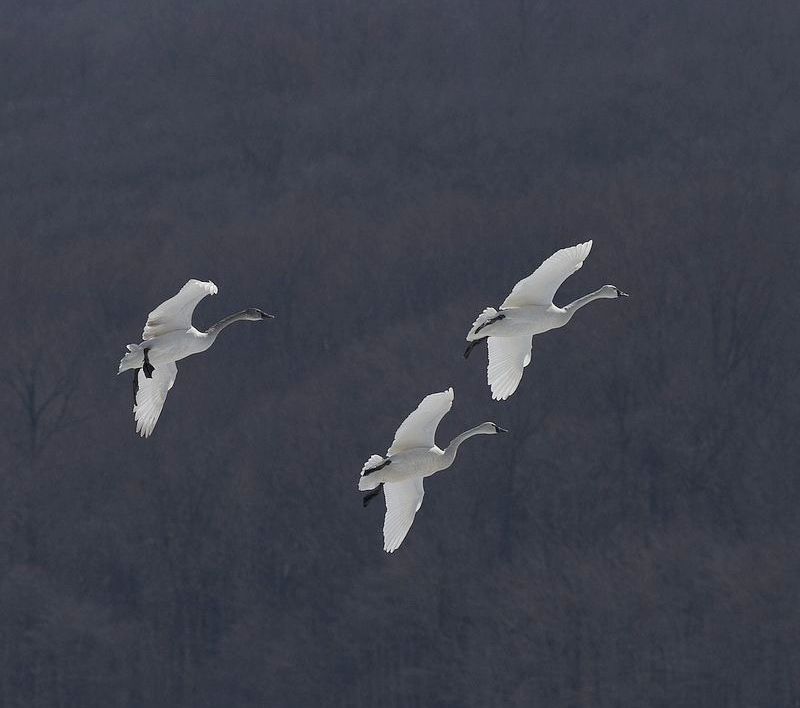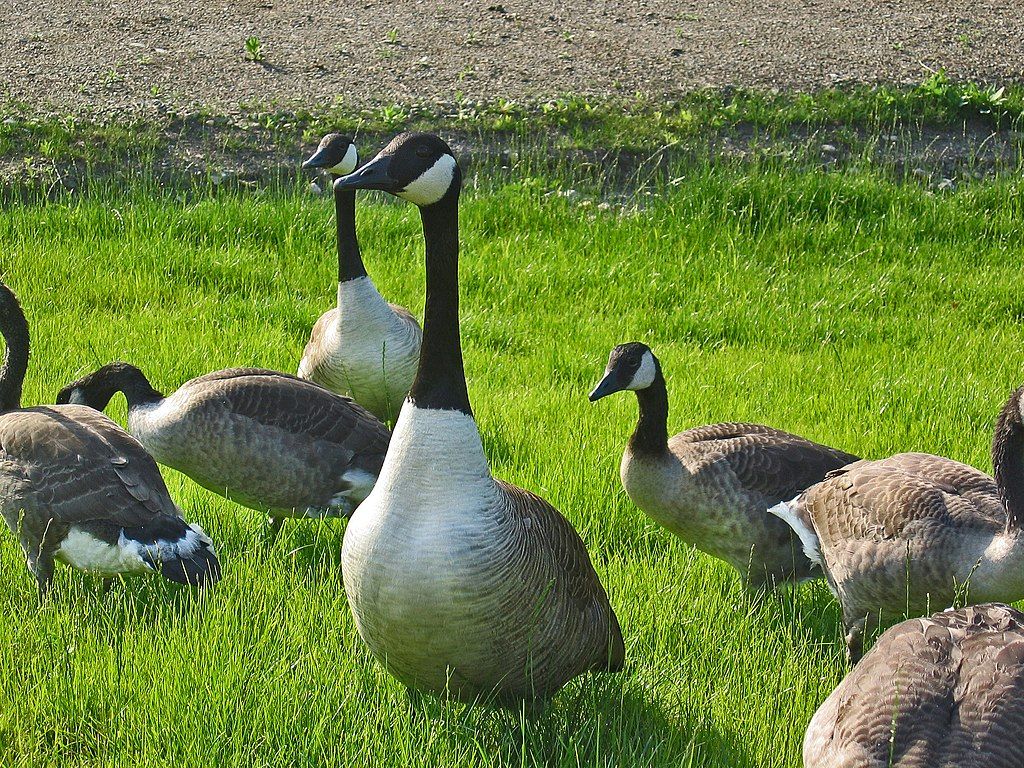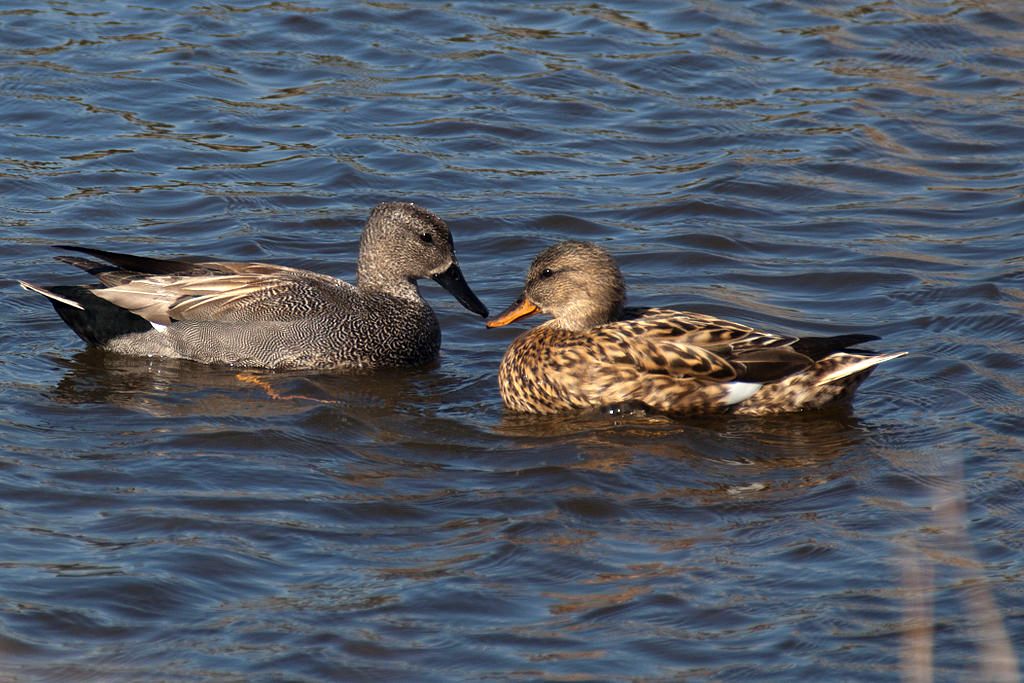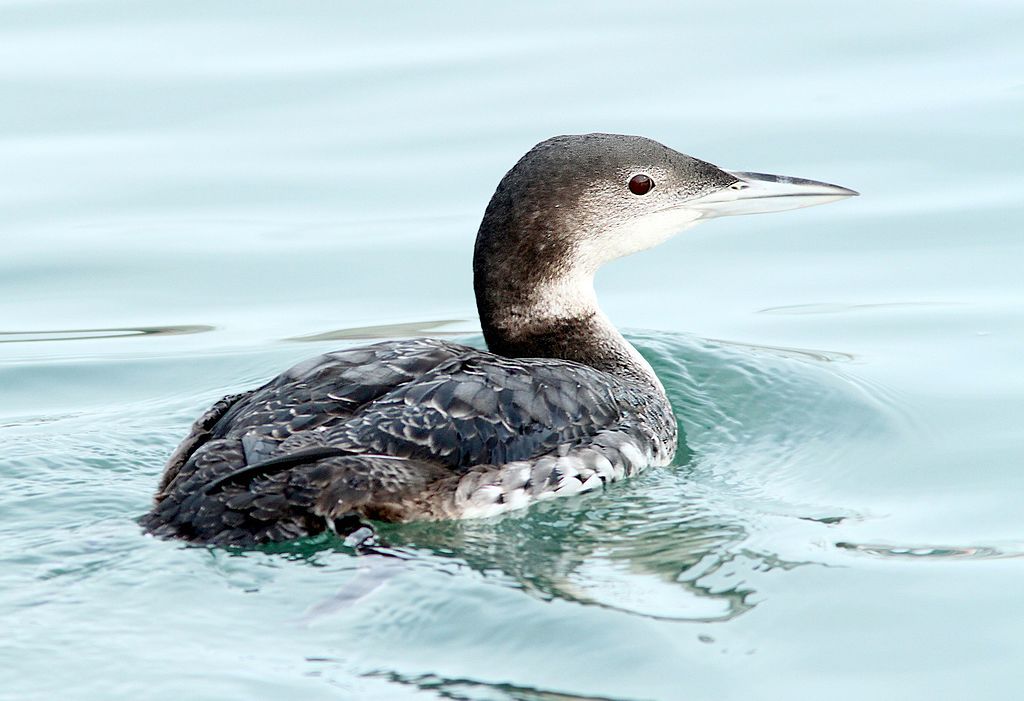
As waterfowl arrive on migration it’s interesting to note that some families travel together, others do not.
Bird parents and offspring stay together during a nesting event but among most species the families split up after the breeding season. Notable exceptions are swans, geese and cranes which stay together as a family unit. The youngsters learn the route and wintering grounds from their parents. If their parents don’t migrate neither do they.
Above, a tundra swan family comes in for a landing at Middle Creek. The youngster (gray head and neck) is still following his parents as they head north in the spring.
Pennsylvania’s resident Canada geese don’t migrate because their parents do not. Back in 1937 when Canada goose populations were dangerously low, a few pinioned geese were released in PA. Those geese bred, but could not migrate. Their offspring never left.

Each duck species has its own migration strategy but that doesn’t mean they travel in family groups. For many, fall is the time to meet and greet the opposite sex. Mixed flocks of gadwalls (Mareca strepera) pair up while they travel. According to All About Birds, virtually all female gadwalls have a mate by November.

For birds, traveling as a family is the exception.
Some always travel alone.

(photo of tundra swans by Dave Kerr in 2014, remaining photos from Wikimedia Commons; click on the caption to see the original)